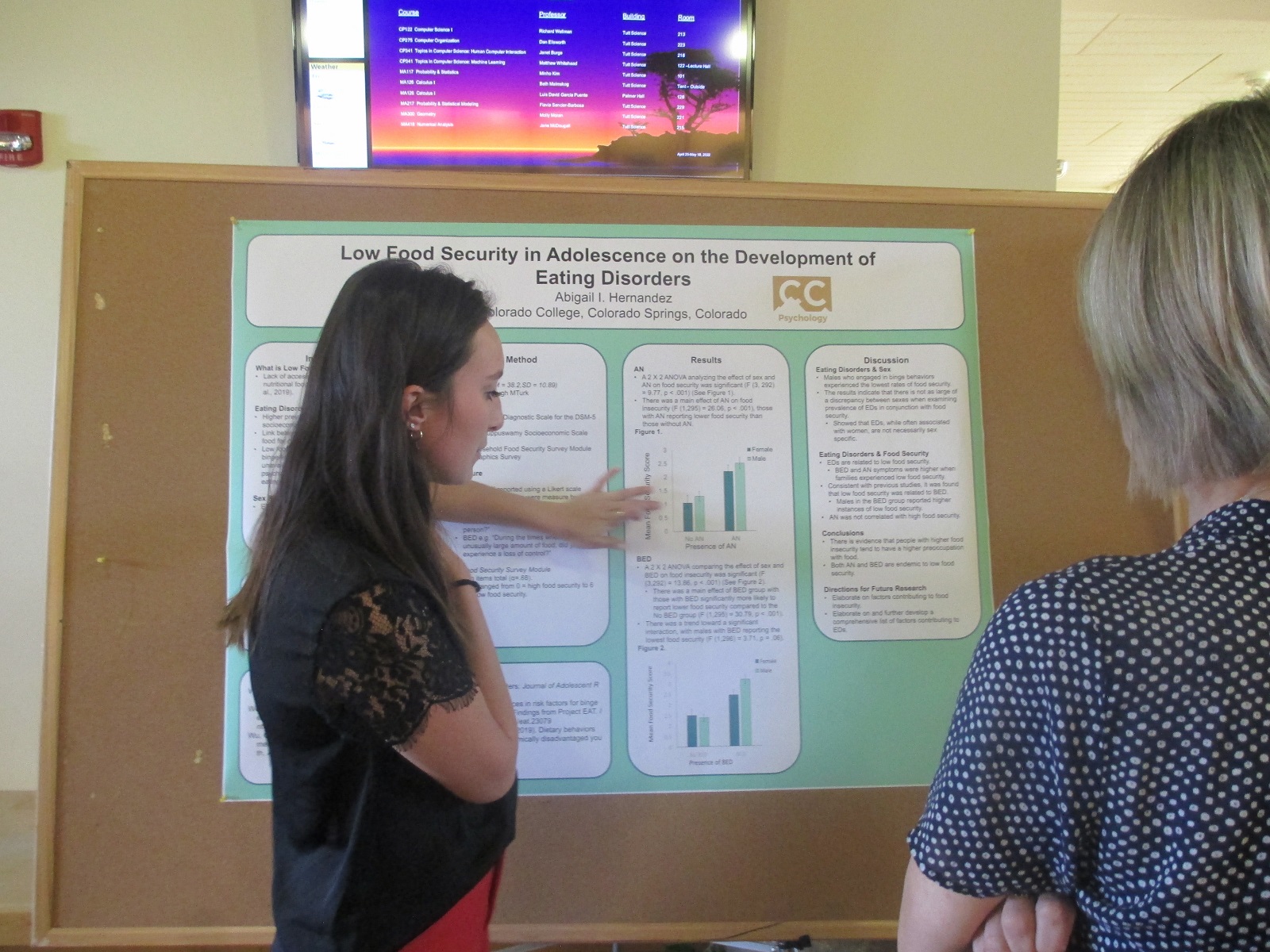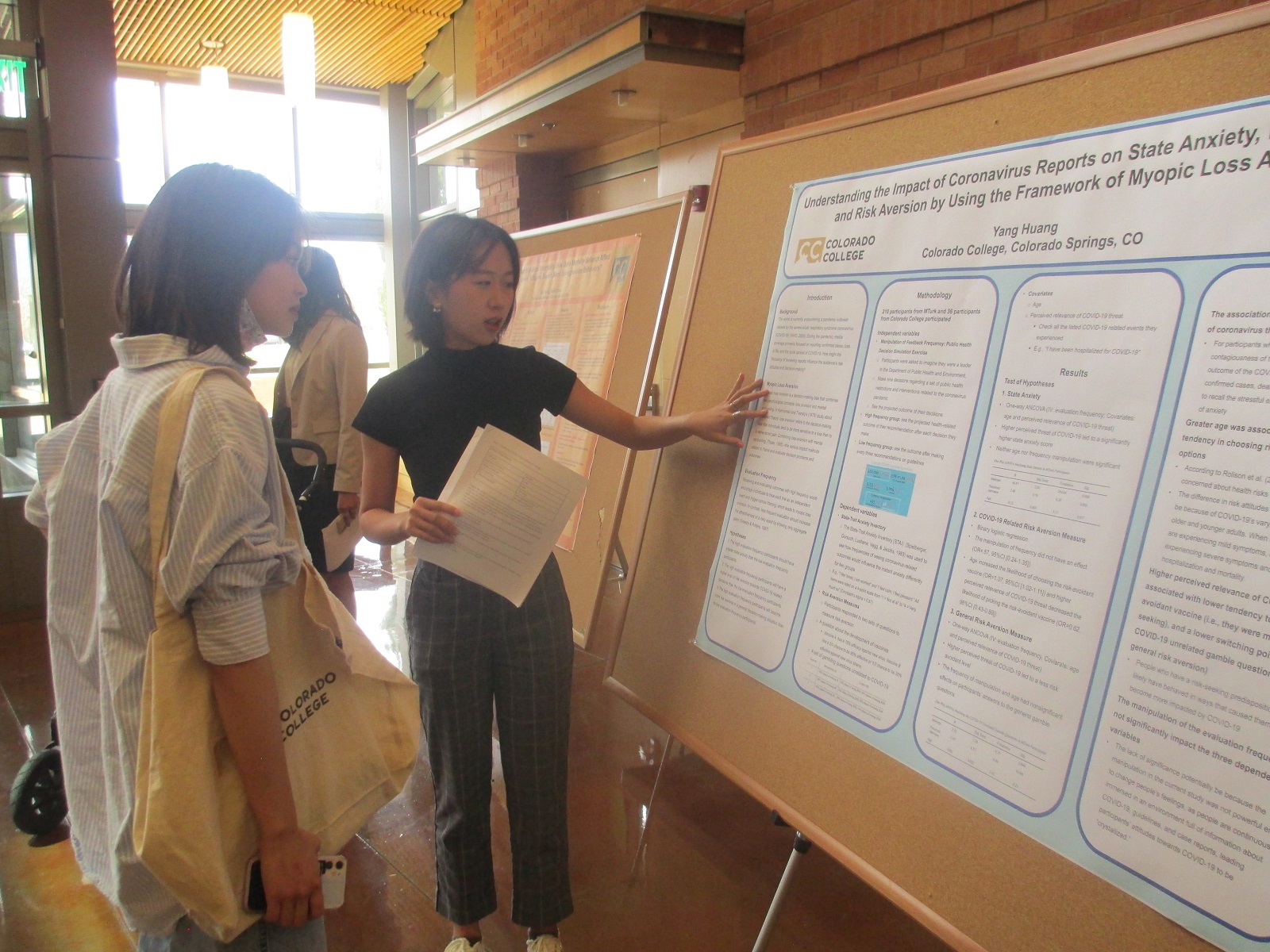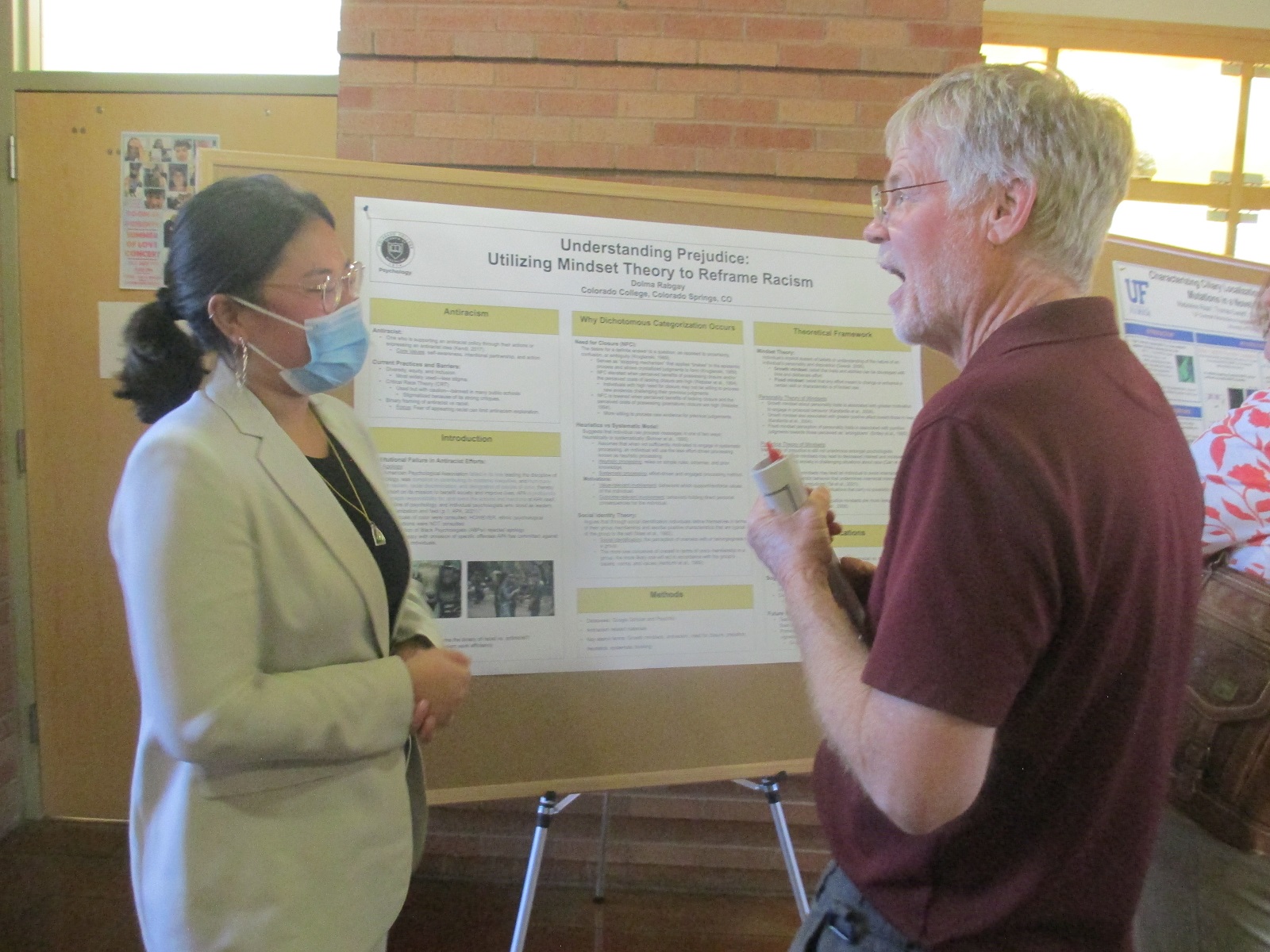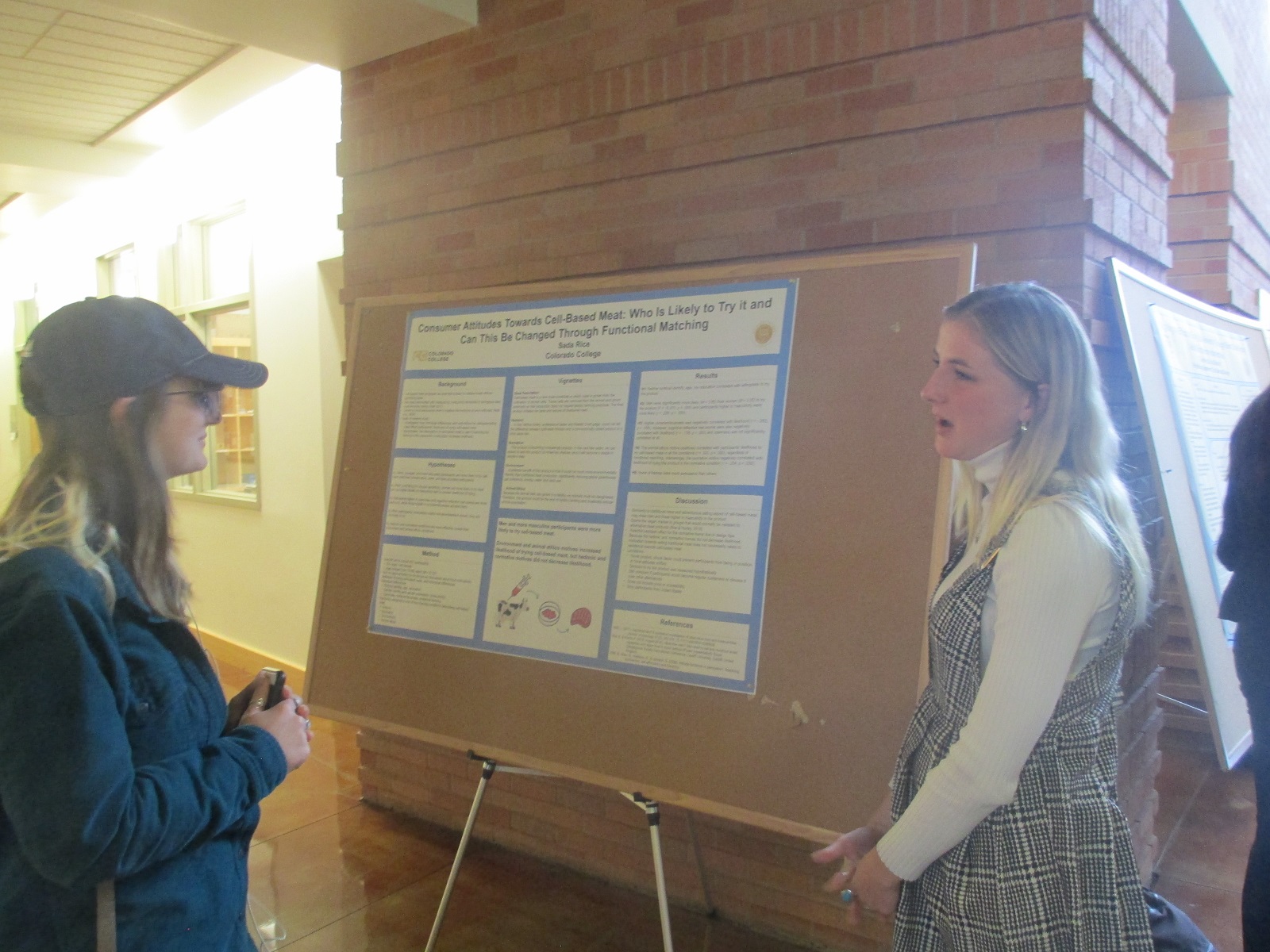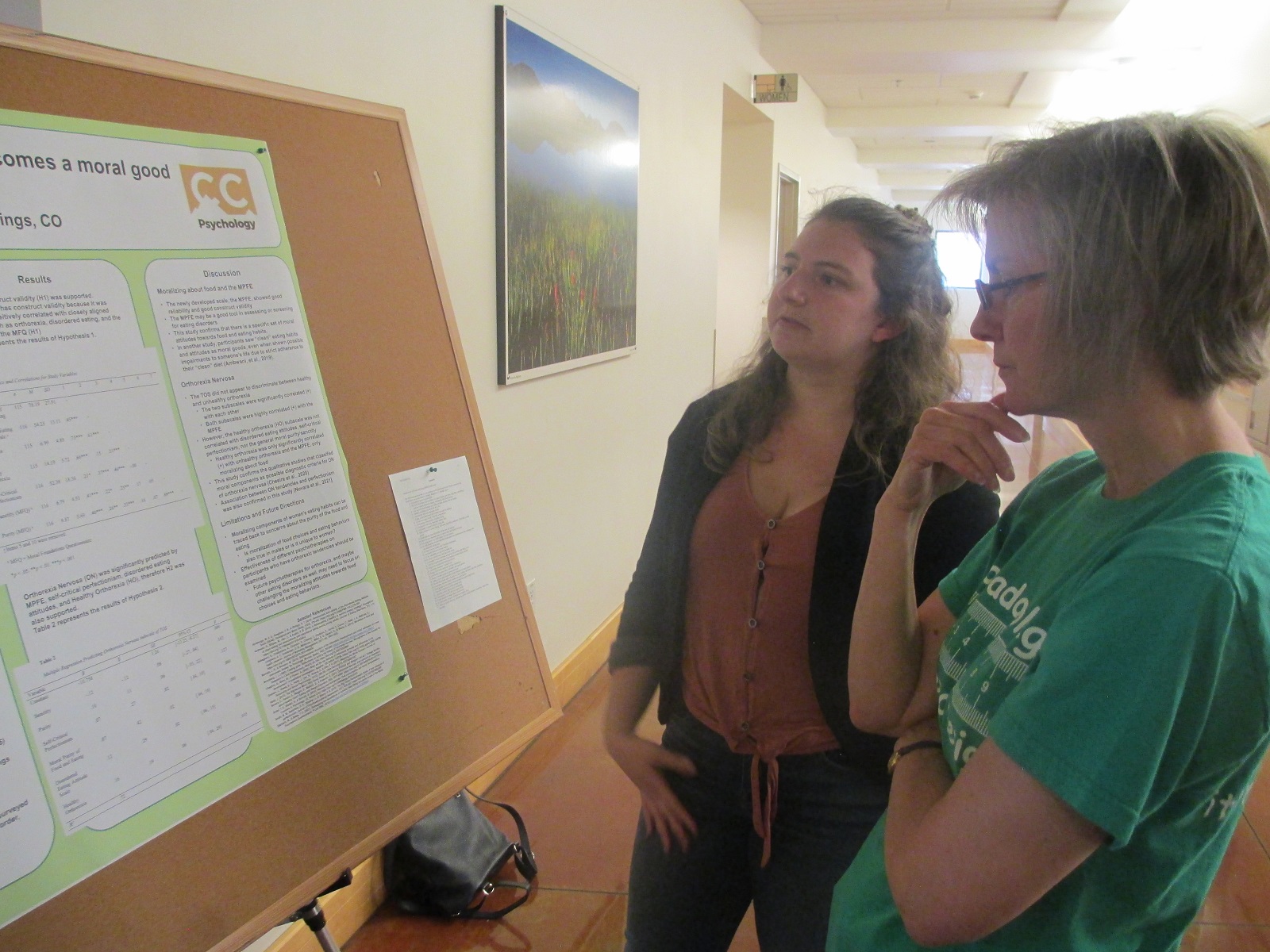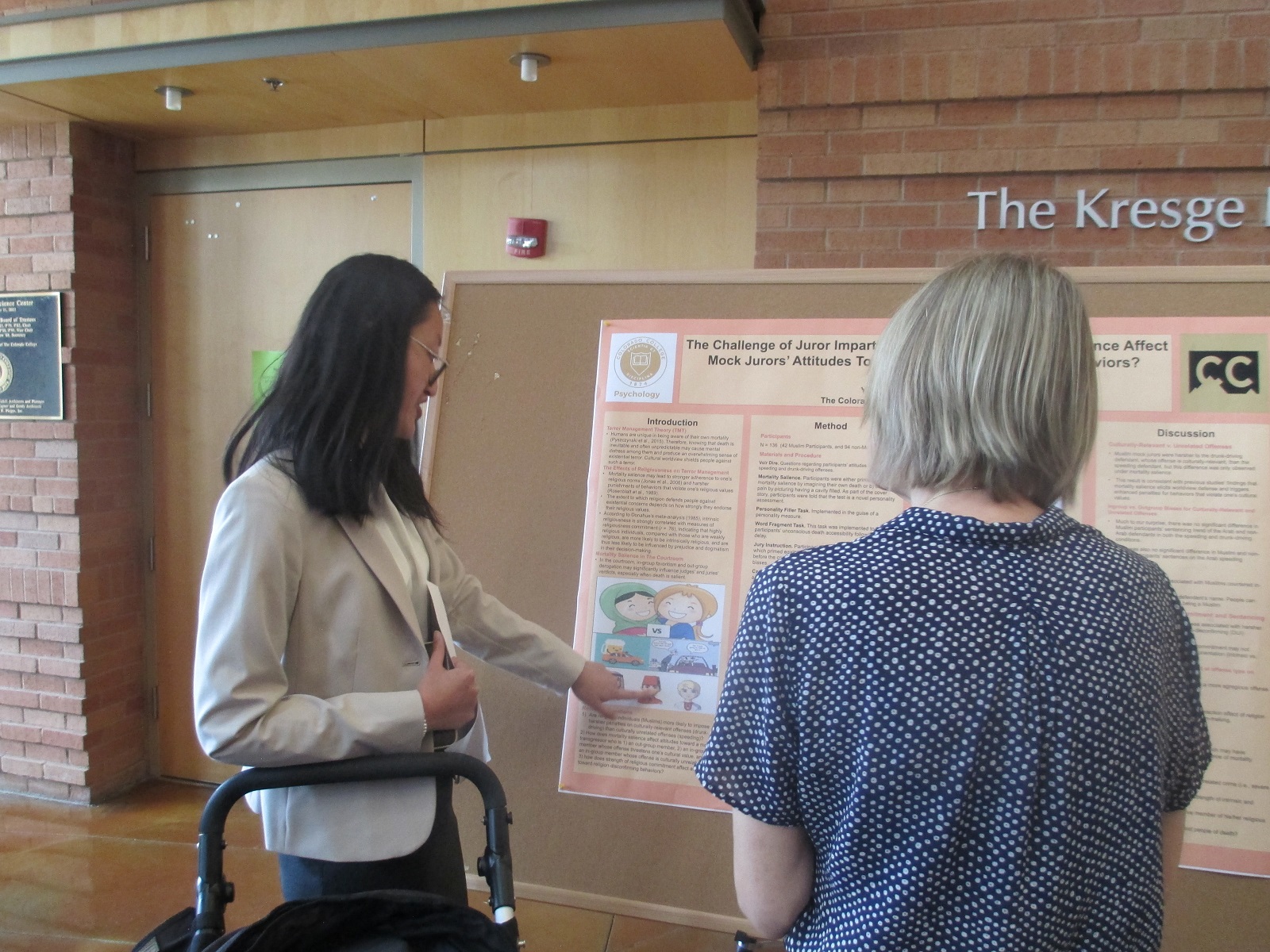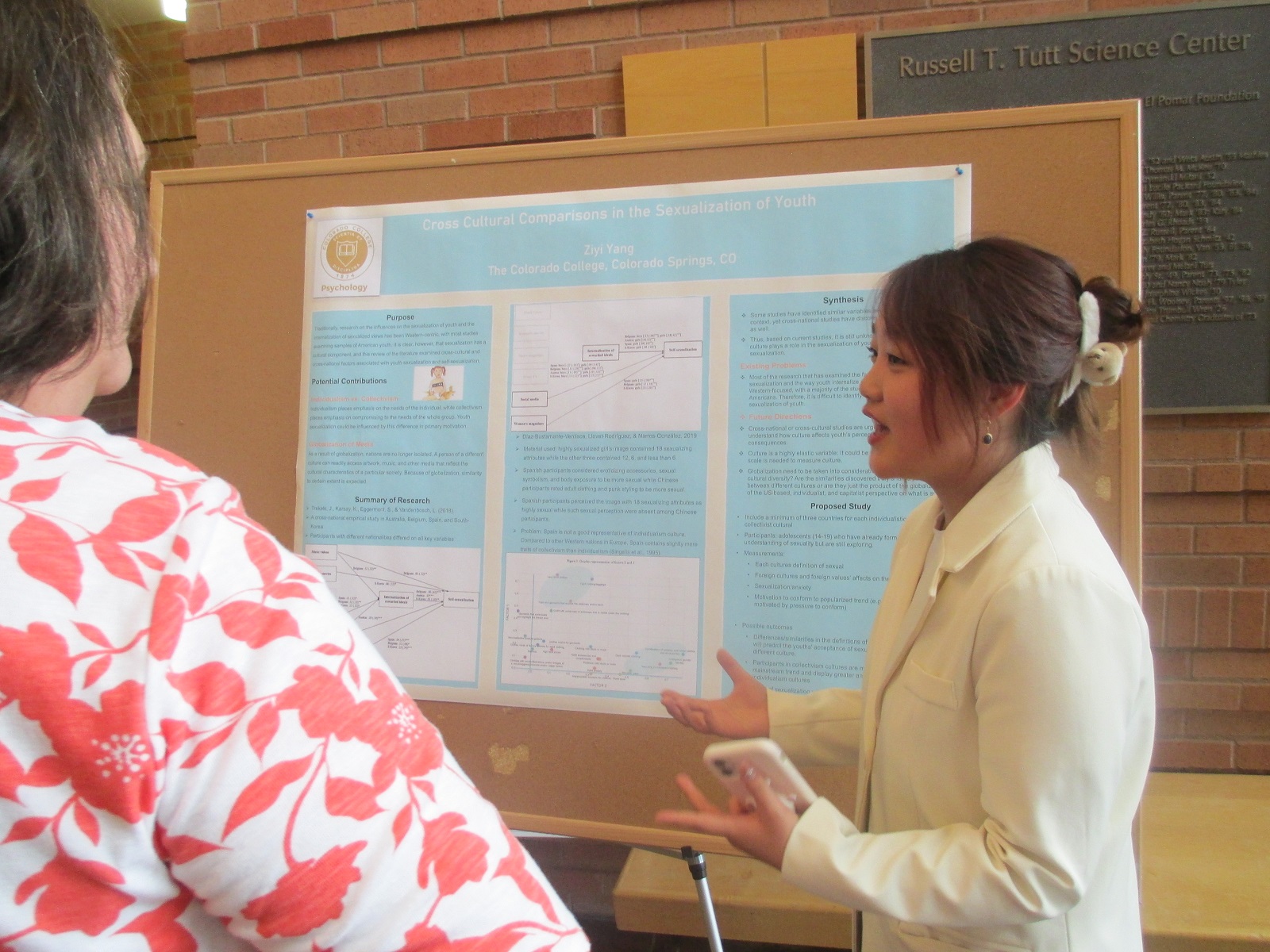Poster Day 2022
Neuroscience
Advisor: Lori Driscoll
Exploiting Receptor-Mediated Transcytosis to Deliver Theraputics to the Brain
Delivering drugs to the brain has historically been a difficult task due to the impermeability of the blood-brain barrier (BBB) and the brain endothelial cells (BECs), which make up the walls of the blood vessels in the central nervous system (CNS). Despite immense efforts to circumvent the BBB, several non-invasive brain drug delivery methods have emerged, such as focused (FUS) and scanning (SUS) ultrasound, nanocarriers, and receptor-mediated transcytosis (RMT). Although these techniques have yet to be FDA approved, RMT offers a unique opportunity for drug delivery, as receptors already expressed on the BBB pose as targets for large drug complexes to enter the brain through endocytosis. One of the most targeted receptors for RMT is the transferrin receptor (TfR), which naturally transports extracellular iron to the brain by binding its natural ligand, transferrin, which carries iron molecules. In comparison to other possible BBB targets, TfR holds great promise due to its relatively consistent expression throughout age and disease progression, ability to be targeted without interfering with its normal function, and its high internalization rate in the brain. This critical literature review discusses several methods for brain drug delivery, highlighting the future potential and remaining challenges RMT faces.
Psychology
Advisor: Tricia Waters
Low Food Security in Adolescence on the Development of Eating Disorders
Eating disorders are characterized by abnormal eating habits that preoccupy the sufferer and meet criteria set by the Diagnostic and Statistical Manual of Mental Disorders, 5th ed. (DSM-5); low food security is characterized by an insufficient access to food. The current study aimed to build on existing literature to assess whether there were links between AN or BED and food insecurity. Further, this study examined whether there were sex differences in the presentation of eating disorders. A 37-item questionnaire consisting of the Eating Disorder Diagnostic Scale for the DSM-5 (EDDS-5), Modified Kuppuswamy Socioeconomic Scale, U.S. Household Food Security Survey Module, and a demographics module were distributed to 302 adult participants via Mechanical Turk (MTurk). Findings showed that both AN and BED were related to food insecurity. There was an interaction between gender and BED on food insecurity with males in the BED group reporting higher levels of food insecurity than females or non-BED males. Furthermore, these results indicate that there is a high preoccupation with food from the low food security groups, suggesting that socioeconomic resources influence the development of eating disorders.
Psychology
Advisor: Emily Chan
Understanding the Impact of Coronavirus Reports on State Anxiety, Risk Perception, and Risk Aversion by Using the Framework of Myopic Loss Aversion
During the COVID-19 pandemic, people around the world relied heavily on the media to learn about the varying and fast-paced change of the virus. In addition, governments are trying to use media to provide accurate information and encourage compliance with strict guidelines and interventions. Myopic loss aversion theorizes that the difference in the frequency of evaluating the outcomes of decisions will affect one’s risk attitudes and preferences for varying decisions. By manipulating the frequency of reviewing the COVID-19 case summary after making decisions’ regarding health guidelines, the current study is trying to explore if myopic loss aversion could be demonstrated in the public health decisions related to COVID-19. The current study did not find evidence of myopic loss aversion: the manipulation of high frequency feedback about pandemic case numbers did not affect people’s risk-seeking vs. risk-averse attitudes. Nevertheless, the study found that age and the perceived relevance of COVID-19 threat was significantly associated with state anxiety, risk attitudes towards both COVID-19 related and unrelated decisions. Together, the findings indicated that to increase compliance with guidelines and reduce unnecessary negative sentiments, designing campaigns and guidelines tailoring to specific age groups could increase the effectiveness for risk-preventing public health measures.
Psychology
Advisor: Tricia Waters
Dissociation in Disordered Eating: Development of the Dissociative Eating Scale
Binge eating entails an overeating episode in which a person feels a loss of control over their eating. One may eat when they are not hungry or already feel uncomfortably full. Binge eating can advance toward binge eating disorder (BED) as frequent binge episodes interfere with one’s wellbeing and cause distress. Women with eating disorders exhibit atypically high dissociative symptoms compared to nonclinical controls. Dissociative symptoms refer to disruptions in integrating cognitive/emotional information (psychological dissociation) and/or physiological/sensory information (somatoform dissociation). The Dissociative Eating Scale (DISS-EAT) was created to measure the dissociation that may take place during an overeating episode. One hundred fifteen adult women completed a survey that included the DISS-EAT, the Dissociative Experiences Scale (DES-II), Somatoform Dissociation Questionnaire (SDQ-20), Loss of Control Over Eating Scale (LOCES), and Multidimensional Assessment of Interoceptive Awareness – Version 2 (MAIA-2). The DISS-EAT produced good reliability and posed good construct validity. Somatoform dissociation and psychological dissociation predicted dissociative eating, and somatoform dissociation was a robust predictor of participants’ dissociative eating experiences. This finding empirically supports theoretical constructs which suggest that disordered eating is experienced somatically. Further, exploratory analyses with the DISS-EAT and Multidimensional Assessment of Interoceptive Awareness – Version 2 (MAIA-2) assessed the relationship between interoceptive awareness and dissociative eating. Future directions with this scale involve administration within clinical populations to measure dissociation throughout an eating episode and inform comprehensive treatment plans.
Neuroscience
Advisor: Lori Driscoll
Treating Maternally-Separated Rats with Short-Chain Fatty Acids: The Effect of Supplementation on Behavior and the Gut Microbiota
The human gut microbiota consists of thousands of species of microorganisms that communicate with the brain via the microbiota-gut-brain axis (MGBA) to influence host physical and mental health. Early life adversity (EA) disrupts the gut microbiota, possibly contributing to the development of depressive and anxiety-like behavior. Some of the microbiota that are disrupted by EA normally produce short-chain fatty acids (SCFAs) as metabolic products; without these SCFAs, healthy communication between the gut and the brain is altered. Here, we utilized maternal separation as a model of EA to investigate the mitigating effect of SCFA supplementation on the behavioral and microbial effects of EA. Maternally separated (MS) rats were removed from their home cage and isolated for three hours daily from postnatal day (PND) 1-14, while non-separated (NS) control rats remained in their cage. Beginning on PND21 and continuing throughout behavioral testing, rats were administered an SCFA solution or equimolar sodium chloride solution. Two groups of rats were selected for cecal sample collection on PND21 and 28, while a third group of rats underwent open field, forced swim, and sucrose preference tests to assess depressive and anxiety-like behavior. Results indicated that MS had an extensive effect on gut microbial composition but did not consistently induce depressive or anxiety-like behavior. SCFA supplementation failed to attenuate these microbial alterations and maladaptive behavior when they were observed. Future studies should employ larger sample sizes, control for handling of rat pups, utilize a lower concentration sucrose solution and administer the SCFA solution for longer than one week prior to initiation of behavioral testing.
Psychology
Advisor: Emily Chan
Understanding Prejudice: Utilizing Mindset Theory to Reframe Perceptions of Racism
The present review explores some of the theoretical frameworks that are applicable to the dichotomous categorization of “racist” and “antiracist”, namely the need for closure (NFC) and the heuristic-systematic model (HSM), as well as social identity theory. Cognitively, it is easier to understand the world in terms of binaries (Chater, 1997). Good, bad. Black, white. Racist, not racist. What is possibly more difficult is developing processes to negate the dichotomous categorization. This review examines mindset theories as a possible solution, utilizing the human capacity to adapt, change, and grow. Studies have indicated that intelligence, personality, or prejudice can be perceived as fixed by nature (fixed mindset) or capable of being developed (growth mindset), affecting behaviors and reaction to challenges (Dweck, 2006; Erdley et al., 1993; Carr et al., 2012)—however, research applying mindset theory to racism and antiracism has yet to be thoroughly researched. This literature review attempts to bridge the gap in understanding on how growth can advance antiracism work by reframing racism and antiracism as malleable.
Psychology
Advisor: Jason Weaver
Consumer Attitudes Toward Cell-Based Meat: Who Is Likely to Try It and Can This Be Changed Through Functional Matching?
Although meat consumption contributes to climate change, animal suffering, antibiotic resistance, and a number of other problems, large segments of the population are unwilling to change their eating habits. Cell-based meat has been proposed as a potential solution to replace meat without sacrificing taste. Despite the potential benefits of this alternative, many questions remain about consumer acceptance. The present study investigated how individual differences and motivations for eating or avoiding meat affect participants’ likelihood of trying cell-based meat. Additionally, the description of the product was manipulated to explore if matching the framing to the consumer’s motivation increased likelihood. Participants took an approximately 6-minute survey that asked about food motivations, likelihood of trying cell-based meat, and individual differences. Motivation matching did not significantly increase willingness to try cell-based meat. Most of the demographic factors were not significantly related, but men and those higher in masculinity were more likely to try the product. Because this demographic is resistant to other meat alternatives, cell-based meat could provide an alternative for certain groups of people that would otherwise consume traditional meat. Food decisions are difficult to change, so it is possible that these descriptions were not enough to show significant effects. Further research should devise stronger manipulations for effective advertising surrounding cell-based meat.
Neuroscience
Advisors: Lori Driscoll (Colorado College), Jeremy C. McIntyre (University of Florida)
Characterizing Ciliary Localization of Type 3 Adenylyl Cyclase Mutations in a Novel Obese Mouse Model
Mutations in type 3 adenylyl cyclase (ADCY3), a downstream GPCR effector that localizes to neuronal primary cilia, have been linked to obesity in patients and mouse models. However, the mechanisms by which ADCY3 contributes to obese phenotypes remains unknown. This project sought to characterize the localization of an ADCY3 protein—which had been truncated at the C-terminus—in a novel mouse model (ADCY3dGFP) using immunohistochemistry. While an antibody targeting the C-terminal epitope detected ADCY3 in wildtype (WT) mice, no signal was detected in mutants, confirming efficient deletion of that region. However, using a secondary antibody to an intracellular epitope, no ADCY3 labeling was detected in WT or mutant mice. Previous studies have shown that specifically inhibiting ADCY3 in the paraventricular nucleus (PVN) is sufficient to induce obesity. We sought to determine if restoring ADCY3 in the PVN would reverse the obese phenotype present in ADCY3dGFP mice. WT and mutant mice were injected with adeno-associated viruses (AAV) expressing either a gain-of-function ADCY3 (ADCY3M297I) or a predicted non-ciliary localizing ADCY3 (ADCY3K465R). We then sought to confirm successful AAV targeting and ADCY3 localization in mutant mice. ADCY3M297I was found to localize to neuronal cilia; however, expression was largely outside of the PVN. Interestingly the ADCY3K465R protein exhibited strong membrane and axonal localization, and was also present in cilia, suggesting that the mutant protein can still be trafficked to cilia when overexpressed. Further experiments are necessary to identify the presence and location of mutated ADCY3 in ADCY3dGFP mice and to improve targeting for expression of AAVs in the PVN.
Psychology
Advisor: Tricia Waters
The Value of Likes: Gender, Social Comparison, and Narcissism in the Online Space
The environments that facilitate everyday interactions have become increasingly dominated by online spaces, resulting in markedly different social structures and contingencies that govern these interactions. These differences have taken place on the level of social expression, most commonly in the form of social media posts, as well as on the level of social evaluation, most commonly in the form of giving likes and comments to those social media posts. The present study investigated whether individuals who scored highly in dimensions of social comparison and narcissism were affected differently by the presentation of selfies that were assigned either a high or low number of likes and also explored how these assessments of others differed by participant gender. Dimensions of social comparison and narcissism were not found to be predictive of shifts in the effect of like manipulation on participants’ ratings of the presented selfies. However, the manipulation of likes did have a significant effect on female participants as they rated high-like selfies higher than low-like selfies for both male and female selfies. Male participants, on the other hand, only rated high-like male selfies higher than low-like male selfies, while not giving significantly higher ratings to female selfies in either like condition. Future studies should investigate what factors can influence males when evaluating females in online spaces, considering the lack of influence by a selfie’s number of likes in this context.
Psychology
Advisor: Tricia Waters
Orthorexia: When disordered eating becomes a moral good
This study examined the morality of disordered eating particularly as it relates to orthorexia nervosa and self-critical perfectionism. A new scale was developed to measure concerns specifically about Moral Purity of Food and Eating (MPFE). The research aimed to discover whether and to what extent the MPFE was related to general concerns of moral purity using the Moral Foundations Questionnaire (MFQ), disordered eating attitudes using the Disordered Eating Attitudes Scale (DEAS), Self-Critical Perfectionism (SCP) using the subscale of the Big Three Perfectionism Scale (BTPS), and orthorexia split into two subscales of healthy (HO) and unhealthy (ON) using the Teruel Orthorexia Scale (TOS). Adult female participants were recruited from Amazon MTurk to complete the surveys along with the new scale and some demographic questions. The MPFE showed excellent reliability and good content validity because it was correlated with the other scales to which it was predicted to be conceptually related. Orthorexia (ON) was significantly predicted by MPFE, SCP, DEAS, and HO. Future studies should further examine the MPFE and test it with male and non-binary populations.
Neuroscience
Advisor: Lori Driscoll
Mitigating the Effects of Early Life Adversity Through Short-Chain Fatty Acid Microbiome Intervention
Early life adversity (ELA), including childhood abuse and neglect, results in long-term impairments in memory and increased risks for substance abuse, depression, and anxiety. ELA’s disruption of the gut microbiota—a web of microorganisms in the digestive tract—may exacerbate these neurobehavioral deficits. The purpose of this study was to determine if oral supplementation with short-chain fatty acids (SCFAs), which may ameliorate some effects of stress via the gut, could mitigate the negative impacts of ELA. Long-Evans rats (N = 127) were assigned to maternal separation (MS; a rodent model of ELA) or non-separated (NS) conditions, and to SCFA supplementation or sodium chloride control conditions. MS rat pups were isolated for three hours per day from postnatal days 1-15. After weaning, rats were tested in a battery of behavioral paradigms designed to examine anxiety, recognition and spatial memory, and depressive and addictive behavior. Littermates were euthanized to collect gut microbiome data and assess hippocampal surface area. MS rats showed impairments in recognition memory and long-term spatial memory compared to NS rats. SCFA supplementation reduced the long-term memory deficits in MS rats but did not mitigate recognition memory impairments. Male rats showed decreased ethanol preference compared to female rats. Despite memory impairments in MS rats, MS hippocampi were larger than those of NS rats. Our findings demonstrate support for ELA-induced long-term memory deficiency. SCFA treatment did not normalize gut microbiome diversity but may have the potential to mitigate memory impairment through an alternative mechanism that future research should explore.
Psychology
Advisor: Emily Chan
The Challenge of Juror Impartiality: How Does Mortality Salience Affect Mock Jurors’ Attitudes Toward Moral Transgression Behaviors?
The US Constitution guarantees the accused the right to be heard by an impartial jury. However, in actual courtrooms, judges’ and jurors’ decisions are often colored by biases, and previous studies have found that mortality salience accentuates such biases. This study analyzed the interaction effect of religion and mortality salience on juror decision-making. The present research also studied whether culturally relevant (drunk-driving) and culturally unrelated (speeding) offenses differently trigger in-group biases. Muslim and non-Muslim mock jurors either sentenced a speeding or a drunk-driving (DUI) defendant, who was either an in-group (Arab) or an out-group (Asian or White) member of the Muslim participants’ religion. The results showed that Muslim participants, whose culture prohibits alcohol consumption, imposed harsher penalties on a DUI defendant than a speeding defendant. This difference in sentencing trend was especially prominent under mortality salience. Additionally, this study examined whether weakly religious Muslims were more likely to impose harsher sentences on a DUI defendant than highly religious Muslims, particularly under mortality salience. Contrary to our hypothesis, highly religious Muslims imposed harsher sentences on a DUI defendant than weakly religious Muslims, and there was no interaction effect of religious commitment and mortality salience on the sentencing of the DUI defendant. Although the results were inconclusive of Muslim participants’ attitudes toward worldview-disconfirming behaviors due to the small sample size, it contributes to the literature as the first research that studies the interaction effect of religion and mortality salience on legal decision-making.
Psychology
Advisor: Tomi-Ann Roberts
Cross Cultural Comparisons in the Sexualization of Youth
The sexualization of youth and its consequences are important areas of psychological scientific study. However, the vast majority of this work has been done in the United States. This project was an in-depth review of empirical studies examining the sexualization of youth in cross-cultural and cross-national contexts. Few studies have been conducted, and most of them have found more similarities than differences. For example, media significantly predicts body shame, body surveillance, and internalization of sexualization in U.S., Belgium, Germany, and Italy. Cross-national studies in Australia, Belgium, Spain, and South-Korea have found some national differences in sexualization-related variables. Similarly, a comparison study found that Spanish and Chinese youth identified different traits (e.g., jewelry, make up, clothing) for youth sexualization, suggesting that their definition of what is “sexual” differed. Research is sorely needed to examine the impact of culture on the sexualization of youth, and I propose three suggestions to guide future research in this area: a. Studies should focus more on cross-cultural than cross-national comparisons; b. Better scales are needed to measure cultural identification more effectively. c. Studies must explore the effect of globalization when studying the sexualization of youth. Are the similarities discovered by research to date truly shared patterns between different cultures or are they the product of the globalization of a US-based, individualist, and capitalist perspective on what is sexy?
show all / hide all




